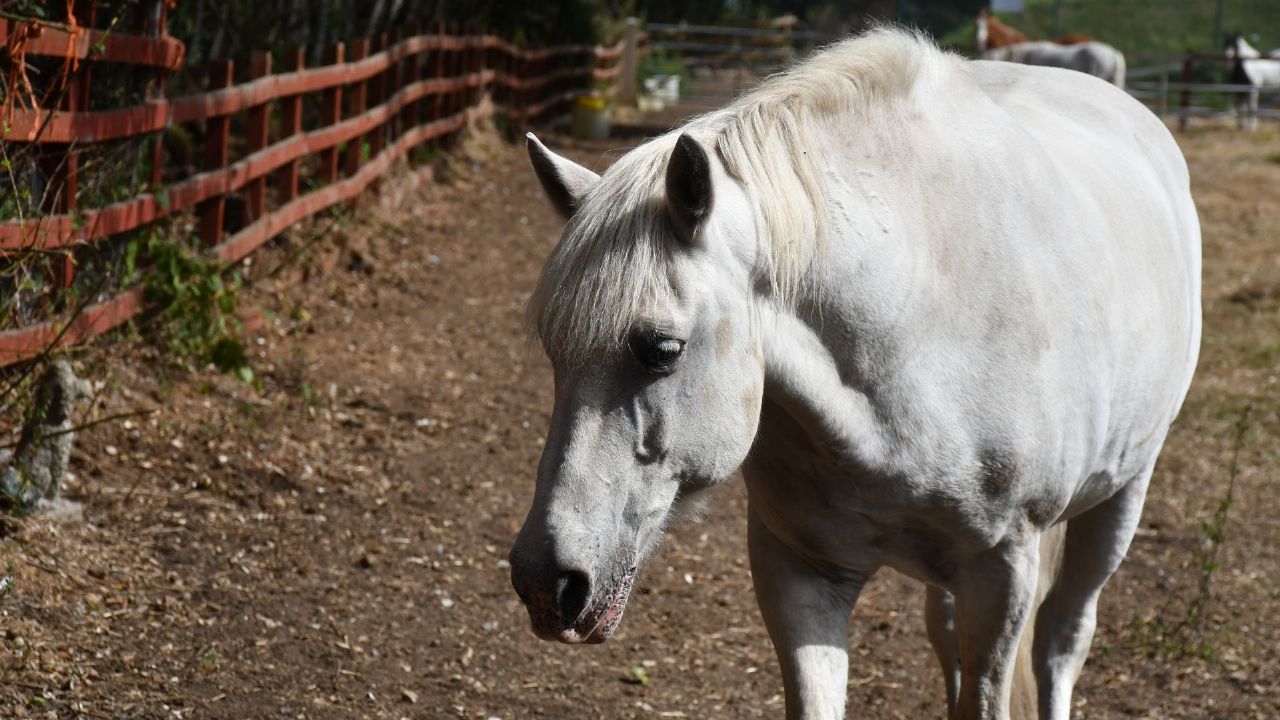10 years of Simple System HayCare!
During its 10 years so far, it has become apparent that HayCare is so much more than a hay replacer...

Track Systems for Horses – The Latest Research
Track systems are growing in popularity and are cited as one of the most commonly used alternative management systems of equines in the UK. Simple System Horse Feeds were lucky enough to be present at The British Equestrian Veterinary (BEVA) Congress 2025 to catch up on the latest research and opinion on their use.
Study one: The first piece of research presented compared a matched area grass track system with traditional strip grazing looking at differences in morphometric changes, distance covered, time budget and behaviour.
Perhaps unsurprisingly, movement was increased on the track system with ponies spending more time moving and covering more distance per day which equated to an extra 12kms covered per week. However, actual time budget – how they split their day between eating, browsing, resting and drinking – was very similar between the two systems with around 68% of their time spent eating.
An unexpected but statistically significant difference was the increase of overt agnostic behaviours or aggression on the strip-grazing system; this was however alongside an increase in allogrooming which the author believed was a necessary increase in reconciliatory behaviours where the horses were “making up” after “falling out”. The incidence of both aggression and allogrooming did decrease over time so there could have simply been a necessary period of settling in and establishing hierarchy in the new field.
There were no differences in morphometric changes on either management system, however the study period was only four weeks long which means it may have simply been too early to see any significant reductions in weight. Both systems also allowed for continuous grazing so intake was not as restricted as it may have been had a grass-free track system been used.
Study two: A second study compared different sized tracks and paddocks with various stocking densities found that weight loss was greater on a track system set-up but that it did differ between individual horses.
Horses seemed to interact with each other less and spent time further apart on the track system whilst mare-only groups and those in mixed herds moved in general more than gelding only groups.
Take home message: Track systems ultimately need more research, especially around welfare and behaviour analysis, but encouraging movement using a track system is effective in promoting weight loss.
Thinking about setting up a track system? If you’re undecided about a track system or setting one up would be too challenging or costly, simply placing resources further apart, even in small paddocks or stables, may be effective in increasing calorie expenditure to encourage weight loss in good doing horses.
For free feeding advice and sensible management suggestions, contact Simple System's Feed Line on 01728 604 008 or complete the online form.
References:
Study one: Kirton R, Sandford I, Raffan E, Hallsworth S, Burman OHP, Morgan R. The impact of restricted grazing systems on the behaviour and welfare of ponies. Equine Vet J. 2025; 57(3): 737–744. https://doi.org/10.1111/evj.14411
Study two: Cameron L, Challinor M, Armstrong S, Kennedy A, Hollister S, Fletcher K. Tracking the Track: The Impact of Different Grazing Strategies on Managing Equine Obesity. Animals. 2025; 15(6):874. https://doi.org/10.3390/ani15060874
During its 10 years so far, it has become apparent that HayCare is so much more than a hay replacer...
Grass has the potential to grow all year, which is different from many other plants. Certain things are necessary for this growth, but if they are not met, the grass will be dormant, waiting for conditions to improve.Â
Rain fall can trigger growth akin to a spring flush, especially if temperatures are high. Even whilst true spring may be in the past, the risk for those prone to laminitis will rise.